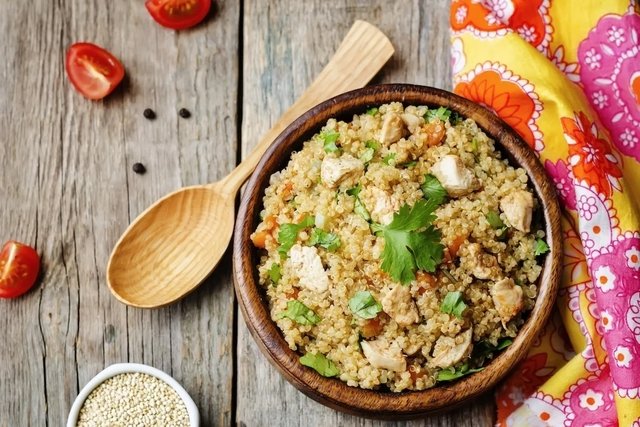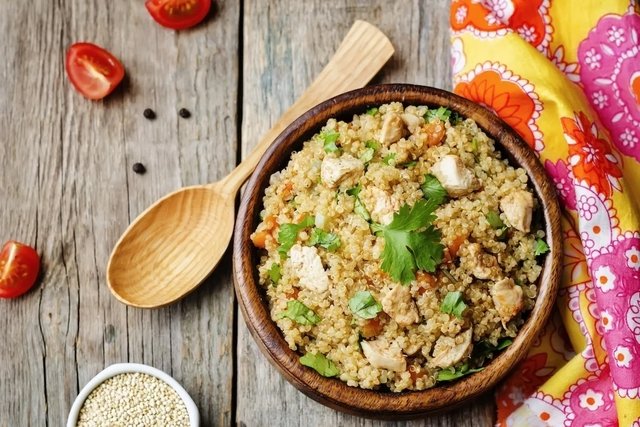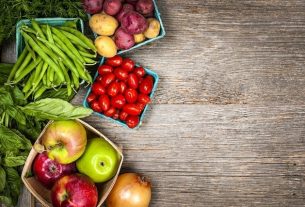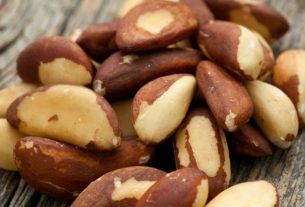To replace rice and pasta in meals, you can consume quinoa, amaranth or buckwheat, for example, which are foods rich in complex carbohydrates with a low glycemic index, proteins, minerals, vitamins and antioxidants, which help balance levels blood sugar, prevent cancer and cardiovascular diseases.
Furthermore, these foods help to lose weight because they are rich in fiber, increasing satiety and reducing the desire to eat between meals, making them considered good options to include in weight loss diets.
Rice and pasta substitutes can be used in various preparations, such as soups, salads, juices and smoothies, for example.

1. Quinoa
Quinoa is a cereal rich in protein and fiber that can be found in the form of flakes, grains or flour. Furthermore, quinoa is rich in omega 3, calcium, iron and B vitamins, helping to prevent cardiovascular problems, osteoporosis and nervous system problems.
How to consume: To replace rice and pasta, you must use quinoa grains, which must be cooked in the same way as rice, using 2 cups of water for each cup of quinoa. Furthermore, in the form of flakes or flour, quinoa can be added to salads, juices, soups and smoothies. See some recipes to lose weight with quinoa.
2. Amaranth
Amaranth is a grain rich in protein, fiber, iron, calcium, magnesium and potassium, having important properties such as preventing cancer, protecting against some neurological conditions, accelerating muscle recovery and preventing osteoporosis.
Furthermore, it is very rich in antioxidants that protect the liver and heart. It also has an anti-inflammatory effect, promotes weight loss and helps reduce cholesterol.
How to consume: Amaranth grains can be cooked in the same way as rice and added to meat dishes, soups or salads. Furthermore, they can also be consumed raw along with fruits, milk and yogurt.
To make amaranth flour, simply grind the grains in a blender and add the flour to smoothies, porridges, cakes and juices. See the benefits of amaranth flour.
3. Zucchini spaghetti
Zucchini spaghetti is a healthy, low-calorie alternative that can be used as a substitute for pasta. Furthermore, it does not contain gluten, making it a good solution for people with gluten intolerance or celiac disease.
Zucchini also has several health benefits as it is rich in vitamin A, carotenoids, vitamin C, calcium and potassium.
How to consume: Cut the zucchini into slices about 2 fingers thick, remove the skins and place on a sheet of baking paper greased with olive oil, placing in a preheated oven at 200ºC for about 30 minutes.
When it is cooked, remove from the heat and let it cool for about 10 minutes. Then, just separate the zucchini strands with the help of a fork, and use with whatever filling you want.
4. Sweet potato
Sweet potatoes are a great source of carbohydrates with a low glycemic index, and can be consumed by diabetics and are a great option for a pre-workout snack, as they also contain good amounts of potassium.
Sweet potatoes are rich in vitamin A, carotenes, vitamin C, potassium, calcium, phosphorus and magnesium, being a carbohydrate rich in antioxidants and anthocyanins, protecting against cancer and heart disease. In addition, it has fibers that help maintain intestinal health and take care of eye health.
How to consume: It can be used in simple cooked form or in puree form, combining well with all types of meat.
5. Buckwheat
Buckwheat is a food very rich in proteins, fiber, antioxidants and minerals such as magnesium, manganese, iron and phosphorus, in addition to not containing gluten.
Due to its fiber composition, buckwheat maintains intestinal health, increases the feeling of satiety and controls blood sugar levels, promoting weight loss and can be consumed by diabetic people.
How to consume: This grain can be prepared in the same way as rice. To do this, add 1 cup of buckwheat for every two cups of water, letting it cook for approximately 20 minutes.
Buckwheat flour can be used to prepare cakes, pies and pancakes, for example. In addition, you can also buy pasta prepared with buckwheat.
6. Bulgur
Bulgur is a whole grain similar to quinoa and brown rice, rich in B vitamins, fiber, proteins, minerals and antioxidant compounds, and is therefore considered a very nutritious food with health benefits, such as improving intestinal health, stimulate the immune system and increase energy production.
How to consume: To make bulgur, simply place the bulgur in hot water, in a ratio of 1 to 2, that is, 1 cup of bulgur for 2 cups of hot water, and let it cook until the grain is soft.
Bulgur can be added to salads, as an accompaniment to meat, sautéed with vegetables or to prepare a vegetarian burger, for example. Learn more about bulgur.
7. Couscous
Couscous is rich in carbohydrates, proteins and B vitamins, providing energy for the body to function properly.
The carbohydrates present in couscous are complex and have good amounts of fiber, with slower intestinal absorption, helping to regulate blood sugar, and can be recommended for diabetic people, in addition to helping to control appetite, being indicated to help lower blood sugar levels. weight when consumed in moderate amounts.
How to consume: To prepare the couscous, you must use the same amount of water and couscous. First, heat the water until it boils, then turn off the stove. Then, slowly add the couscous, cover the pan and let it rest for about 5 minutes, which can then be consumed or used to prepare other recipes.

Sign up for our newsletter and stay up to date with exclusive news
that can transform your routine!
Warning: Undefined array key "title" in /home/storelat/public_html/wp-content/plugins/link-whisper-premium/templates/frontend/related-posts.php on line 12
Warning: Undefined array key "title_tag" in /home/storelat/public_html/wp-content/plugins/link-whisper-premium/templates/frontend/related-posts.php on line 13




